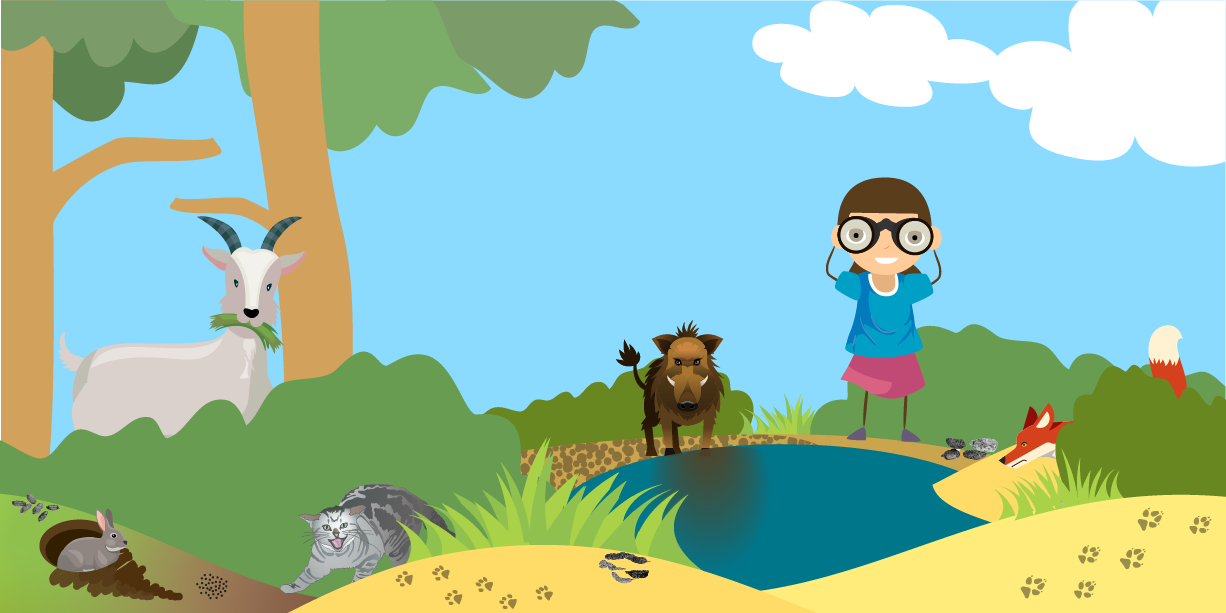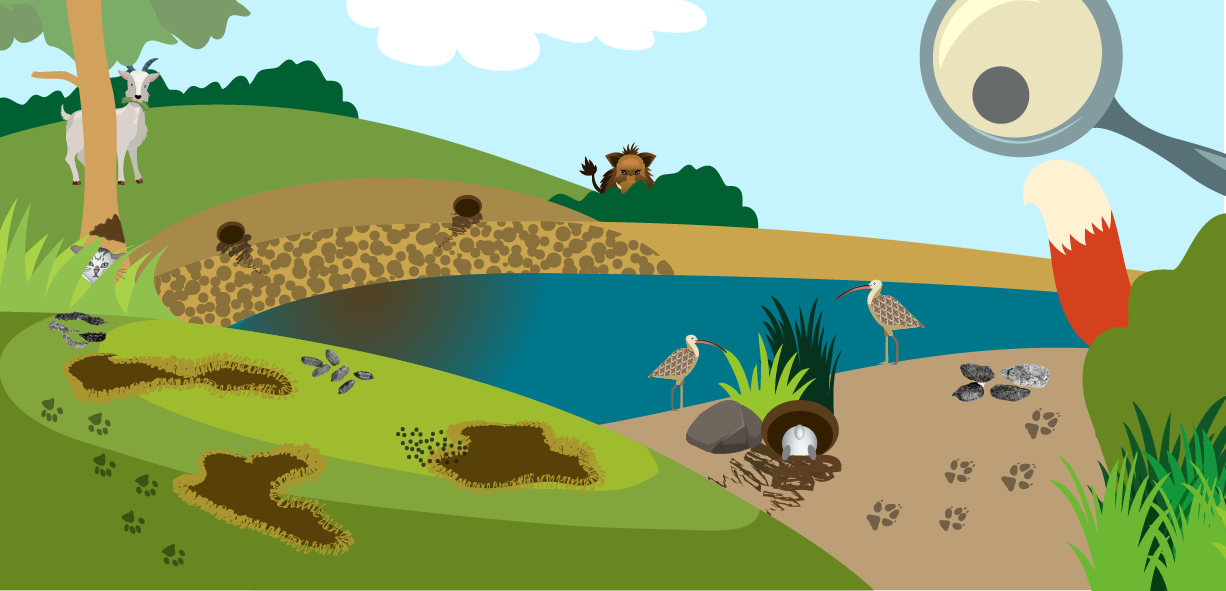
Feral animals are animals that have been introduced from other areas,
usually other countries, that have established populations in the wild.
Feral animals have a devastating effect on our farmland, farm animals, native species and natural environments. Their impact can be extremely damaging because they have the ability to adapt quickly to different conditions, breed rapidly (reproduce), compete for food (including our crops), carry diseases and they often live in areas that make it hard to remove them. Feral animals, like cane toads, can also be toxic to native animals that might mistake them for their normal food and prey on them, causing the native animal to die.
Some feral animals that cause large problems in Australia are foxes, feral goats, feral pigs, feral cats, feral dogs, rabbits, deer, European carp, cane toads, feral mice and rats, camels, common starling, red-eared slider turtle and the Indian myna.
What’s the problem?
Feral animal impacts
The problem with feral animals is that they have a HUGE impact on the landscape and with our native and domestic animals. Here is a list of some of their impacts.
Predation – Australia has a large number of small native mammals, birds and reptiles that are particularly susceptible to being preyed upon by feral animals. They can also cause large problems in agriculture by preying on young or vulnerable livestock.
Competition – they compete with native species and farm animals for food, or damage and degrade food sources.
Disease – they can be carriers of disease and parasites that our native or farm animals are susceptible too. As they are wild animals, they quickly spread problems throughout our bushland and farming landscapes. Even humans can be vulnerable to disease and parasites spread by feral animals.
Poisonous – some can be highly poisonous, causing death to those animals that might prey on them.
Invasive plants – they are also responsible for spreading weeds throughout the landscape.
Destroying sensitive habitats – they can dig up the soil, eat and damage plants and foul waterways that damages our natural environments.
Damage infrastructure – they can damage objects like fences, gates, watering points machinery and other infrastructure of farms.
What can be done?
Dealing with feral animals can be tricky!
There are so many feral animals and many require specific methods of control. Here is a list of some of the methods being used.
- Trapping
- Poisoning
- Aerial and ground shooting
- Den (home) destruction
- Exclusion fencing
- Guard animals to protect livestock.

Let’s play detective
Do you know the what signs to look for when tracking feral animals?
Feral animals are often elusive (difficult to find or catch), and when they cause damage to our farms or native areas the first step we must take is to look for signs that help us identify which feral animal is causing the problem.
The signs we might look out for are things like tracks (footprints and other marks), scats (animal faeces/droppings), diggings/rubbings (any recognisable disturbance of soil or vegetation), hairs, feathers and other fibres.
In this activity you will play the detective and help a farming family identify the feral culprit whose wreaking havoc on their property.
Step 1
Read the fact sheet called ‘Some True Ferals‘. Learn about a few of the common feral animals and the problems they cause. Familiarise yourself with how they look and the images of their tracks and scats.
Step 2
Read through the ‘Scene of the crime‘ story. Prove you are a good pest detective by researching the Eastern Curlew and and answering the questions about ‘The victims’.
Step 3
Now it is time to look at the evidence that were found near the scene of the crime. Work through the 4 clues provided to see if they can help you identify the feral animal that is causing problems. You will need to use the ‘Some True Ferals‘ fact sheet to help with clues 1-3 and Internet access to go to the website provided for clue 4.
Step 4
Learn more about the Eastern Curlews and Hunter Local Land Services feral animal control groups in the ‘What’s next?‘ section.
Additional activities
The Fast and the Furriest – a role play game
This outdoor game can be used to help teach the impact that feral animals can have on threatened species.
Feral animals are animals that have been introduced from other areas, usually other countries, that have established populations in the wild. They have a devastating effect on our farmland, farm animals, native species and natural environments.
DOWNLOAD ACTIVITY SHEET